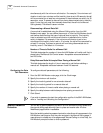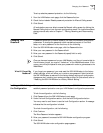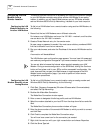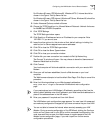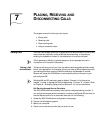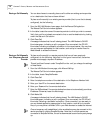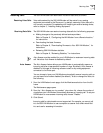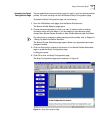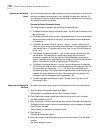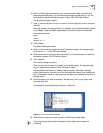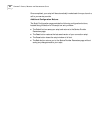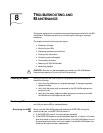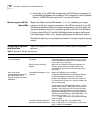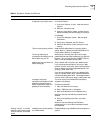
80 CHAPTER 7: PLACING, RECEIVING AND DISCONNECTING CALLS
Disconnecting Calls You can disconnect calls manually or utilize timers to disconnect calls
automatically.
Disconnecting Calls
Manually
To disconnect calls manually, do the following:
1 From the 56K LAN Modem home page, click Manual Calling.
The Manual Call Control window appears.
2 In the table, locate the name of the service provider from which you wish to
disconnect and then verify that the call is active under the Status of Call column.
3 Click Hangup Call.
A message indicates that the call is being disconnected.
Disconnecting Calls
Automatically Using
Timers
Disconnect timers are set via the Data Call Parameters window. Specifically, the
parameters you can set are as follows.
Minimum Call Duration
Enter the minimum length of a call that must be reached before the 56K LAN
Modem detects inactivity on the connection and then starts an inactivity timer. The
default is two minutes, which is also the lowest value allowed for this field.
Idle Timeout
In the field Disconnect a data call after how long of an inactivity period?, enter the
number of seconds after which a call should be disconnected due to inactivity. This
timer is initiated once the minimum call duration is satisfied and no further activity
is detected. To prevent a data call from being disconnected due to inactivity, enter
0. The default for an automatic call is seven minutes. The default for a manual call
is 15 minutes.
Using a Connection
Script
Some service providers, such as CompuServe
®
, require the use of a connection
script to successfully log on to their remote servers. You can create and associate
specific connection scripts with each of the LAN Modem’s four service provider
profiles.
Note that this option is provided only for those remote sites which do not offer
automatic PPP negotiation. You may not be required to create a script for every
service provider profile that you want to access from your LAN Modem.
Before You Begin To create a connection script, you will need the following information from your
service provider.
■ Your user name and password.
■ The Data Bits required by the remote server (either seven or eight).
■ The Parity setting for the remote server (either none, even or odd).
■ The number of Stop Bits required by the remote server (either one or two).



